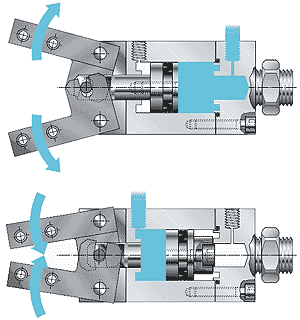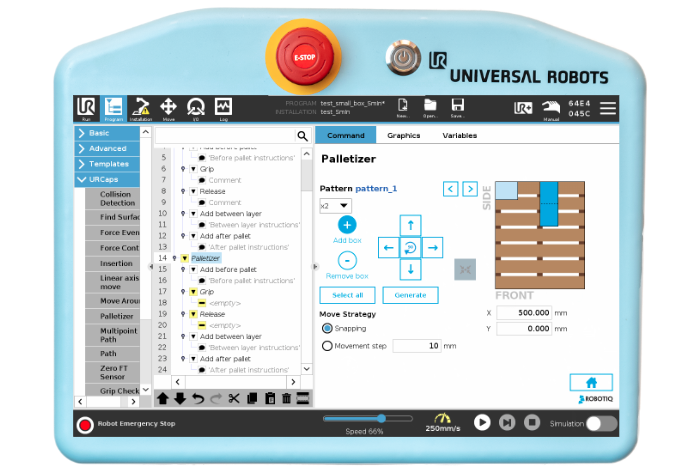How Pneumatic End Effectors Work?

Posted on Jun 26, 2014 in Automation
3 min read time
neumatic grippers are mechanical devices that are really common in automated manufacturing processes. Combined with a robot they can do many robotic applications such as: pick-and-place, machine tending or assembly. We will talk about how they work generally, including the pros and cons.
Usual pneumatic grippers work using a piston to open and close their fingers/jaws. Air is compressed in the chamber of the piston and, according to the piston size, when it has enough pressure the air will make the piston move. The simple formula to remember is:
Pressure X Surface = Force
Even if these robot grippers all work with the same principle, they may have different configurations:
Angular gripper
The piston in this kind of gripper will make the jaws move around a rotating axis in order to make it close. So it uses a lever to make the fingers move and grasp a part. Here is a picture that explains it all.

In blue, you can see how the air makes the piston move. This type of gripper can provide a fairly large gripping force. However, one gripper can only grip a limited size variation of parts. Other versions of this gripper can include a third or fourth jaw.
Parallel gripper

The next version of pneumatic end effector that we will talk about is the parallel gripper. In this configuration the gripping surface of the jaws remains parallel throughout all their movement. This kind of gripper can also include a third or fourth jaw for gripping unusual parts.
Pros and cons
The pneumatic end effectors are low cost devices that are simple to use and implement. With any type of pneumatic gripper, jaws can be design to fit different kinds of pieces. However, this is also a limitation for this type of device, since it takes different jaws to grip very different pieces. Moreover, using air is another limitation, because as a compressible fluid, the movement of the piston will be less precise, making it very difficult to precisely control force and speed of the jaws.
These are some of the reasons why Robotiq is making electric end effectors. Their movements are more precise since they are made by controllable electric motors. Thus, force and speed of the jaws can be controlled. While pneumatic grippers can only do full stroke (open or close), the electric grippers can do partial closing and opening sequences. Moreover, their adaptive design enables them to grip a large range of different size and shape of parts.
In conclusion, pneumatic grippers are the solution for high volume and low-mix production, because they are simple and low cost. However, the new challenge in the automation industry is about low volume and high-mix production. The best solution for this new need would be electric end effectors. To know which robot gripper is best for you, get our ROI Robot Gripper Calculator.
Related article: How to choose the right Gripper for your application








Leave a comment